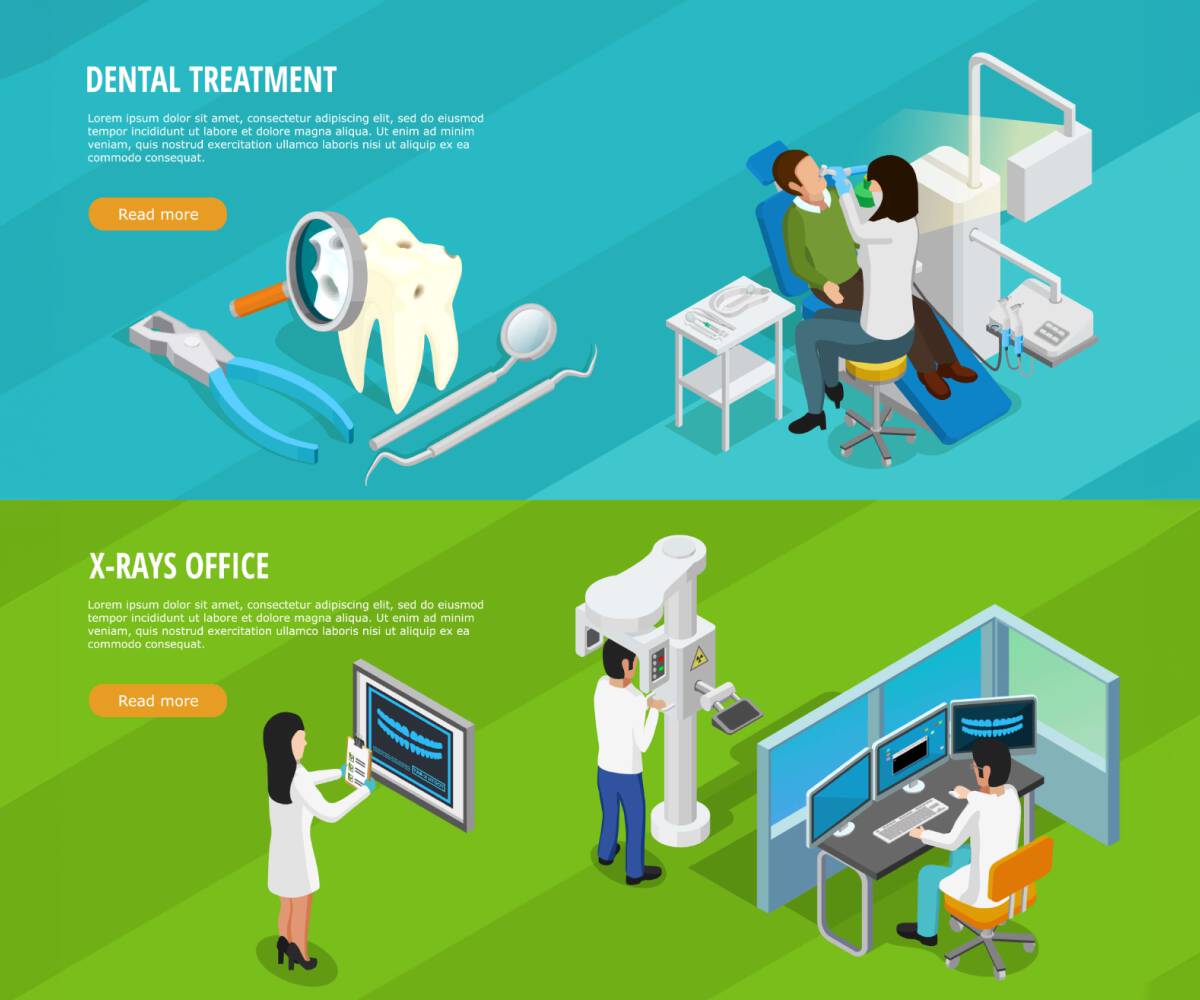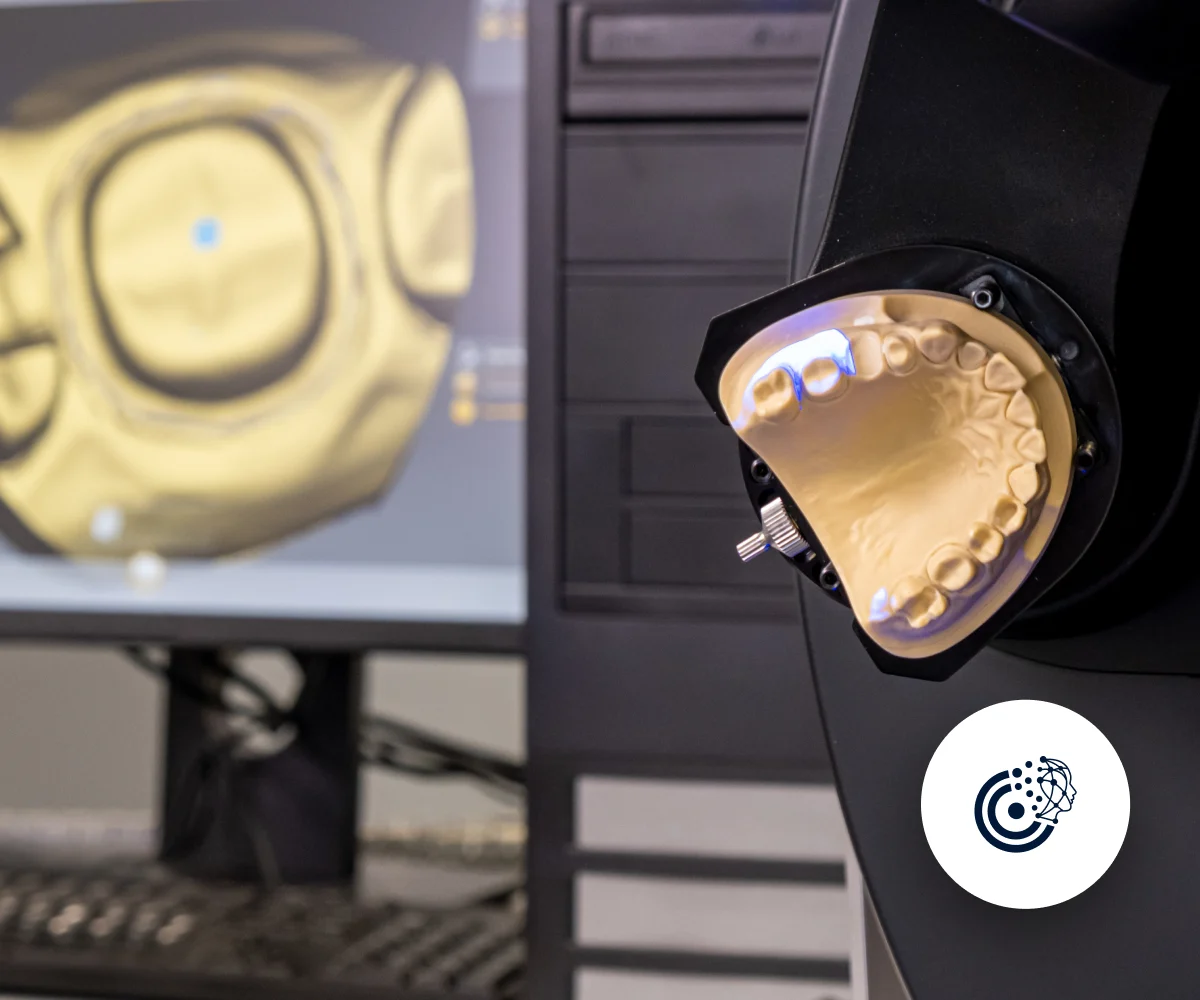Advanced 3D Dental Imaging for Dental Care
In the field of dentistry, advancements in technology have significantly improved the way oral health issues are diagnosed and treated. One such groundbreaking innovation is the use of 3D dental imaging. This cutting-edge technology has revolutionized dental care by providing detailed three-dimensional views of the teeth, jawbone, nerves, and surrounding structures. Let's delve deeper into the world of advanced 3D dental imaging and its implications for dental procedures.
What is 3D Dental Imaging and How Does it Differ from Conventional X-Rays?
3D dental imaging, also known as cone beam computed tomography (CBCT), is a type of imaging that generates detailed 3D images of the oral cavity. Unlike conventional 2D dental x-rays that provide limited two-dimensional views, 3D dental imaging allows dentists to visualize the entire mouth in three dimensions. This technology utilizes a cone-shaped x-ray beam to capture high-resolution images of the teeth, bones, soft tissues, and nerve pathways.
When comparing 3D dental imaging to traditional dental x-rays, the difference in image quality and scope of information is striking. Conventional 2D x-rays may miss certain dental problems due to their limited perspective, whereas 3D imaging allows for a comprehensive evaluation of the oral structures. The detailed images produced by 3D scans enable dentists to assess bone quality, identify issues with tooth alignment, and detect potential oral health concerns with greater precision.
The benefits of using 3D dental imaging for diagnosis are manifold. Dentists can create accurate treatment plans, precisely locate impacted teeth, and evaluate the suitability of patients for dental implants. This advanced technology plays a crucial role in enhancing patient care and ensuring optimal treatment outcomes.
Why Should I Choose 3D Dental Imaging for Dental Procedures?
One of the primary reasons to opt for 3D dental imaging is the enhanced precision it offers in treatment planning. Dentists can visualize the exact anatomical details of the teeth and surrounding structures, leading to more accurate diagnoses and customized treatment solutions. Additionally, 3D imaging reduces the margin of error in dental procedures, improving overall treatment outcomes.
Another significant advantage of 3D dental imaging is the reduced radiation exposure compared to traditional x-rays. By using lower radiation doses and focusing the x-ray beam precisely on the area of interest, dentists can minimize potential risks to patients while obtaining high-quality images for diagnosis and treatment planning.
Moreover, 3D dental imaging provides improved visualization of dental structures, allowing for precise assessments of dental conditions and treatment needs. The detailed 3D images enable dentists to identify issues that may have been overlooked with conventional x-rays, leading to more effective and targeted treatment interventions.
How Does Cone Beam CT (CBCT) Revolutionize Dental Care?
Cone Beam CT technology revolutionizes dental care by offering detailed three-dimensional images of the oral and maxillofacial regions. Unlike traditional medical CT scans that focus on larger areas of the body, CBCT scans are specifically designed for dental applications, providing high-resolution images with minimal radiation exposure.
CBCT scans play a crucial role in dental implant planning by allowing dentists to assess bone density, volume, and quality in the jawbone. With CBCT imaging, dentists can precisely plan the placement of dental implants, ensuring optimal outcomes and reducing the risk of complications during implant surgery.
Additionally, CBCT is instrumental in evaluating bone quality and treatment success in dental procedures. Dentists can analyze the bone structure in 3D, identify any abnormalities or deficiencies, and tailor treatment plans accordingly. This technology enhances the predictability of dental treatments and improves patient satisfaction with the results.
What Are the Key Benefits of 3D Dental Imaging in Dentistry?
The adoption of 3D dental imaging in dentistry offers numerous advantages for both dentists and patients. One key benefit is the precision it provides in treatment procedures and the customization of treatment solutions. By utilizing detailed 3D images, dentists can perform complex procedures with greater accuracy and predictability.
Efficient treatment planning is another advantage of 3D dental imaging, leading to reduced chair time for patients. Dentists can streamline the planning process, optimize treatment workflows, and minimize the time spent on repetitive procedures. This not only improves the efficiency of dental practices but also enhances the overall patient experience.
Enhanced patient comfort and satisfaction are paramount in dental care, and 3D dental imaging contributes significantly to achieving these goals. Patients benefit from less invasive procedures, personalized treatment approaches, and improved treatment outcomes, leading to higher levels of satisfaction and better overall oral health.
How Can Dentists Incorporate 3D Dental Imaging Into Routine Dental Care?
Integrating 3D dental imaging systems into dental practices is essential for improving diagnostic capabilities and treatment outcomes. Dentists can invest in advanced imaging equipment, such as cone beam CT scanners, to enhance their diagnostic accuracy and treatment planning processes.
Training and education play a vital role in helping dentists leverage 3D imaging technologies effectively. Continued education on the use of 3D imaging software, interpretation of 3D scans, and integration of 3D imaging into routine dental procedures is crucial for maximizing the benefits of this advanced technology.
By utilizing 3D imaging for comprehensive treatment plans and post-treatment monitoring, dentists can ensure the long-term success of dental procedures. Regular follow-up scans and evaluations enable dentists to track treatment progress, identify any issues early on, and make necessary adjustments to treatment plans for optimal outcomes.
What is Cone Beam CT (CBCT)?
Cone Beam CT (CBCT) is a 3d dental x-ray technology that provides 3d dental scans of the teeth and surrounding structures using a machine called a cone beam. This dental imaging technology offers a 3d rendition of the mouth with less radiation compared to traditional x-ray machines.
A 3d dental scan taken with a cone beam ct machine may be asked for by your dentist if you are a good candidate for dental implants. The x-ray source in a CBCT machine rotates around your head, taking just a few seconds for a regional scan.
Does My Insurance Cover 3D Dental Imaging?
Does my insurance cover 3D dental imaging? Many insurance plans do cover 3D dental x rays, also known as 3D dental xray or 3D radiography dental. Some policies may even cover a 3d scan for teeth or 3d scan of teeth. Check with your provider to see if 3d tooth scan or 3d tooth x ray is included. 3d x ray for teeth and 3d x rays dentistry are becoming more common, as it provides a more detailed image of the mouth. 3d xray technology allows the dentist to see dental issues such as impacted wisdom teeth more clearly.
With dental cone beam ct scans, a single scan can provide a full view of your teeth with less radiation than traditional x-rays require. The cone beam ct can be used by every dentist in the family dental practice, as the 3d x-ray device provides a comprehensive image of the mouth.

How Do You Benefit from 3D Dental X-Rays?
3D dental x-rays are beneficial because they provide a more detailed and comprehensive view of your teeth and mouth compared to traditional 2D x-rays. With 3D x-ray imaging, your dentist will be able to make a more accurate diagnosis and treatment plan. The 3D x-ray machine takes a full mouth x-ray in a single scan, which includes the teeth and gums. Additionally, 3D dental technology reduces the exposure to radiation compared to traditional 2D x-rays, making it a safer option for patients.
Furthermore, 3D x-ray teeth are necessary in some cases where dentist need a more detailed look at your teeth and mouth. The 3D digital scan time is quicker than traditional methods, allowing for faster and more efficient treatment. By using 3D CBCT, dentists can get a better understanding of the specific dental issues each patient is facing, leading to more precise and effective treatment plans.
How to do 3D imaging?
3D X-ray technology allows dentists to get a more comprehensive view of a patient's teeth and jaw. This advanced imaging technique, also known as 3D X-ray for teeth or 3D X-ray teeth, provides detailed information that may not be visible with traditional 2D X-ray images. Some may question whether 3D dental X-rays are necessary, but for a dentist, having this tool can significantly improve diagnosis and treatment planning.
What is the purpose of 3D imaging?
3D imaging in dentistry, specifically 3D x-rays for teeth, serve the purpose of providing dentists with a more comprehensive view of a patient's oral health. These detailed images help dentists get a clear picture of any dental issues that may not be visible with traditional 2D x-rays.
Many professionals argue that 3D dental x-rays are necessary for accurate diagnosis and treatment planning. With clearer images, dentists can better assess the condition of teeth, roots, and surrounding structures, leading to more precise and effective treatment options for patients.
Types of 3D Imaging for dental care
3D x-ray technology for dental care is becoming increasingly popular among dentists. This technology, also known as 3D dental imaging, allows dentists to get a detailed view of the teeth and surrounding structures. 3D x-rays produce more comprehensive images than traditional 2D x-rays, which require multiple angles to capture the same information.
Many dentists believe that 3D x-ray teeth scans are necessary for accurate diagnosis and treatment planning. Intraoral x-rays are limited in their ability to show the full extent of dental issues, while 3D x-ray for teeth can provide a complete picture of the mouth and jaw.
FAQ
What is 3D imaging in dentistry?
3D imaging in dentistry refers to the use of 3D x-ray technology by dentists to capture detailed images of teeth and surrounding structures. These 3D x-ray teeth provide a comprehensive view, aiding in accurate diagnosis and treatment planning. While 3D dental x rays are not always necessary, they can be extremely beneficial in certain cases.
What is the difference between 3-D and CBCT?
3-D dental imaging uses 3D x-ray technology to provide a detailed and comprehensive view of the teeth and surrounding structures. On the other hand, CBCT (cone beam computed tomography) is a specific type of 3D x-ray for teeth that focuses on the dental structures. Many dentists consider 3D dental x rays necessary for accurate diagnosis and treatment planning.
Unlike traditional x-rays, which only offer a two-dimensional view, 3D x-ray teeth provide a three-dimensional image of the teeth and bones. Dentists can get a more detailed understanding of the patient's oral health using 3D x-ray technology. While 2D x-rays require multiple images to capture the full picture, 3D x-rays offer a complete view in a single scan.
What is a 3-D radiographic procedure?
3D x-ray teeth are a cutting-edge radiographic procedure used by dentists to capture detailed images of a patient's teeth and oral structures in three dimensions. These images allow dentists to get a comprehensive view of the patient's dental health and aid in diagnosing issues that may not be visible with traditional 3D x-ray for teeth.
Many dentists believe that 3D dental x rays are necessary for accurate treatment planning and ensuring optimal outcomes for patients. The detailed images provided by 3D x-ray dentist can reveal hidden dental problems and assist in performing complex procedures with precision.
What is the use of 3-D scanner in dentistry?
3D scanners in dentistry are used to create detailed 3D x-rays of the teeth, allowing dentists to accurately assess dental conditions and plan treatments. These 3D dental x-rays are necessary for detecting issues that may not be visible in traditional 2D x-rays. Dentists use 3D scanners to get a comprehensive view of the oral cavity.





 Contact Us
Contact Us

